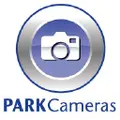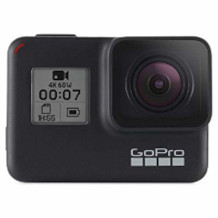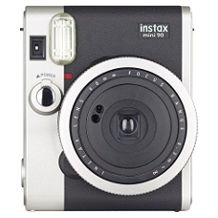Full-frame camera purchasing advice: how to choose the right product
- What you need to know
- Full-frame cameras have a particularly large sensor and therefore take photos in very high quality.
- The images are characterized by their rich detail, high dynamic range and low image noise.
- Both mirrorless system cameras and SLR cameras are available as full-frame cameras.
- The professional cameras are aimed at photographers with high demands and are accordingly expensive.
The camera of the extra class
For a long time, full-frame cameras were considered to be absolutely professional devices and were hardly common among amateur photographers – if only because of the handsome price. Thanks to advances in camera technology, such top models are now available at somewhat lower prices. Nevertheless, new full-frame cameras rarely cost less than 1,000 euros. Thus, the purchase still represents a large investment. Those who still decide to do so will get a camera that shoots images in the highest quality.
With a Smilliensor size of 36 x 24 millimeters, a full-frame camera makes full use of the effective image size of a classic 35-millimeter 35mm film. Older cameras did not, as they had smaller image sensors. Even modern cameras with crop sensor have a narrower image section compared to full-frame. Converted, a full-frame camera is as powerful as 30 compact cameras combined.
The term “full format” may sound like a particularly large image, but the so-called medium format is even larger. Therefore, instead of full-frame, we sometimes talk about 35-millimeter or 35-millimeter sensors.
Who needs a full-frame camera?
Even though the price threshold for full-frame cameras has dropped, the devices are still primarily aimed at a professional clientele as well as demanding and passionate hobby photographers. If you want to shoot beautiful photos for the photo album or online posts, you don’t have to invest in a full-frame camera for that. The high resolution that such cameras possess only becomes necessary for high-quality and large-format prints and prints.
A full-frame camera is also not necessarily recommended as an entry-level device. If you’re just starting out in photography, you may not be able to take full advantage of the camera’s features. In this case, the use of a cheaper camera with a crop sensor is recommended.
Advantages and disadvantages of the crop sensor
When buying a digital camera, the choice of sensor size is an important decision. Here you have to choose between the conventional crop sensors and a full-frame camera. In both camera variants, the sensor is the rectangle onto which the lens projects the image. It is then converted into a digital photo. The sensor therefore corresponds to the film in an analog camera. The larger a camera’s sensor, the more light and detail it can capture and the higher the image quality.
A crop sensor is smaller than the 35-millimeter format. Images taken with such a sensor are therefore cropped at the edges. We are talking about the so-called crop factor. Crop sensor cameras are not only cheaper, but also smaller and lighter than full-frame cameras. They are the ideal solution for anyone looking for the most portable camera possible.
The disadvantage of the crop factor can also be an advantage in some situations. The smaller sensor gives the lens extra reach, which is perfect for wildlife or sports photography. However, the downside of this is limitations in the wide-angle range, which would have to be counteracted with a very strong wide-angle lens.
Due to the smaller surface area, a crop sensor cannot store as much image information as a full-frame sensor. The effect is negligible in practice and only noticeable in certain situations, for example in low light conditions. This difference in quality between full-frame and crop format is also constantly decreasing.
The advantages of a full-frame camera
Full-frame cameras are absolutely professional devices that shoot photos in the best quality. Those who choose a full-frame camera will enjoy many advantages compared to other cameras.
Larger field of view
A full-frame sensor has no crop factor, so users get a particularly wide field of view with their lens. This is ideal for challenging shots of anything that requires a wide image, be it landscapes or architecture.
More details and better resolution
Full-frame sensors offer the highest standard of resolution and detail. If you want to print photos in large format, you have to rely on it. More megapixels also mean that even small sections of the image are displayed in sharp detail. This makes it possible to crop the photo considerably without quality loss. The reason for the outstanding quality of the photos is the size of the sensor. Cameras with larger pixels typically provide better image quality because these pixels capture a higher percentage of light.
Shallower depth of field
Although depth of field is primarily dependent on the lens and its maximum aperture, the camera itself also contributes to the effect. A full-frame sensor allows for a shallower depth of field than a smaller crop sensor. This makes it possible to achieve bokeh effects, i.e. blurred backgrounds. These are mainly used in portrait, fashion and foot photography to set the scene for the subject in the foreground.
Low-light performance
Photos taken in very low light are called low-light shots. A high ISO performance is required for good low-light photos. A larger sensor is able to collect more light, so the lack of light does not have to be compensated for by ISO settings. This simultaneously reduces the noiseassociated with high ISO values.
Another reason why low-light shots are better with a full-frame camera is the higher image sharpness. The photos contain more details and are less noisy than shots with crop sensors. Astrophotographers therefore recommend full-frame cameras for night sky photography.
Color depth and dynamic range
The color depth of the images also benefits from the larger sensor of a full-frame camera. Since there is more space for image information, color transitions inparticular look much more natural. This is important for many shots and plays a big role especially in portrait photography.
Another advantage that full-frame sensors bring with them is the camera’s dynamic range. Dynamic range is the difference between the darkest shadows and the lightest areas in an image. Cameras with a wide dynamic range are able to capture detail shots in any lighting conditions with consistent quality. With high-quality full-frame cameras, it is possible to capture high-contrast images.
Important purchase criteria
In terms of image quality, full-frame cameras are superior to many other cameras. To put it bluntly, the only choice left here is between “very good” and “outstanding”. One fundamental decision you’ll have to make is between DSLR and DSLM. Photography purists will be interested in a model with an optical viewfinder.
With or without mirror – DSLR or DSLM?
Before buying a camera, there is often the question of the system: SLR or mirrorless camera? In photographer lingo, the terms DSLR and DSLM are also common, with the former standing for “Digital Single Lens Reflex” and the latter for “Digital Single Lens Mirrorless”. This brings the crucial difference to the point. While DSLRs have a mirror construction inside that redirects the light, DSLMs manage without this system.
For photographers, the image quality of a camera is the most important criterion. Especially in their early days, mirrorless system cameras could not compete with classic SLR cameras. In the meantime, however, DSLRs and DSLMs have come so close to each other in terms of image quality that there is no significant difference. The decisive factor is rather how well the photographer knows how to use the camera and which lenses are used.
Since a detailed technical comparison of DSLR and DSLM is beyond the scope of this text, the most important differences between the systems are summarized here:
- A DSLM is usually more compact and lighter than a DSLR.
- While a DSLM has an electronic viewfinder, a DSLR has an optical viewfinder.
- For video recording, a DSLM is more suitable.
- A DSLM often offers a higher continuous shooting speed.
- A DSLM can shoot silently.
- New technologies are more likely to be implemented in DSLMs.
- DSLRs often have a longer battery life.
- There are numerous lenses and many accessories for DSLRs.
The image quality is high in any case
Those who decide to buy a full-frame camera will definitely get a device that shoots high-quality photos. Modern full-frame cameras usually resolve with 20 to 36 megapixels. They offer higher image quality than other cameras with the same number of megapixels. The reason for this is the larger full-frame format, which offers more surface area per pixel, so that each pixel can absorb more light.
If you want to take the highest quality photos possible, a full-frame camera is the way to go. Here it is only necessary to note the differences between different models. The more professional the equipment, the more expensive it usually is.
Autofocus – Focusing on subjects
With autofocus, cameras – be it a DSLR or DSLM – automatically focus on the targeted subject. SLR cameras use the so-called phase autofocus for this, while mirrorless versions rely on contrast autofocus. Both systems work with the help of sensors. How well the autofocus focuses depends on the number and arrangement of the sensors.
In a modern SLR camera, the mirror redirects light not only to the image sensor, but also to the autofocus system. The camera then automatically detects in which direction and how far to adjust the distance on the lens. Small disadvantage of the technique: Phase autofocus requires contrasts in a specific direction, namely horizontally, vertically or sometimes diagonally. So-called cross sensors are able to react to both horizontal and vertical contrasts.
The contrast autofocus of a mirrorless full-frame camera analyzes brightness and color differences directly on the image sensor. The contrast detection of the mirrorless tends to work a bit slower than contrast autofocus systems, but this difference is steadily decreasing. Since DSLM full-frame cameras are usually professional devices, there should not be any significant differences to a contrast autofocus.
Seeing through with the optical viewfinder
In photography, the viewfinder is the device used to aim at the subject and frame the image. This task is performed by a display in modern cameras; there is also talk of an electronic viewfinder. However, there are also models that additionally have an optical viewfinder. There is no either-or here; the optical viewfinder – formerly standard – is nowadays an additional feature that many photographers still attach great importance to.
The advantage of an optical viewfinder is the more realistic perception of the subject. Since photographers look as if through a small window, there is no distraction from peripheral vision. Optical viewfinders have focus points and guide lines, which can also be added to electronic viewfinders. However, the optical viewfinder works even when the camera is turned off.
Operation – Many elements are optional
In terms of operability, it is not irrelevant whether you choose a DSLR or a DSLM. Full-frame DSLRs are in most cases both larger and heavier than full-frame DSLMs because of the additional technology inside their bodies. So if you are interested in a full-frame camera that is as compact as possible, you should go for the DSLM. However, DSLMs do not necessarily have to be particularly small. People with large hands can also find larger models that are easier to use.
Many full-frame cameras are bursting with controls. This can quickly become confusing and intimidating to photography novices. But the bottom line is that the cameras let users choose how intensively they want to deal with the settings and operation. If you want, you can usually set everything to automatic and never have to deal with further controls or functions. Anyone who wants to learn the craft of photography can gradually become familiar with setting ISO, exposure, shutter speed and aperture. For photography professionals, these controls are indispensable anyway.
Interfaces with other devices
Most full-frame cameras offer a number of ways to transfer images to another device. For example, there is the classic variant of removing the memory card from the camera and inserting it into another device. A USB cable is also included with many cameras. This is convenient because not every PC has an SD card slot. Although files cannot be moved via HDMI, it is possible to start a slideshow on a larger screen via image transfer.
Besides that, a good full-frame camera should also support wireless data transfer. WLAN-enabled cameras upload images to a cloud as soon as they are connected to a network. Using Bluetooth, you can send the images directly to your phone or transfer them to your PC – if it supports Bluetooth.
Many modern cameras are also equipped with the NFC transmission method. Some interested parties are certainly familiar with this abbreviation from contactless payments. NFC stands for “Near Field Communication” and is a technology that can be used to exchange information within a radius of ten centimeters. The data transfer works in the same way as with contactless payment. Instead of a card reader, the cell phone is simply held up to the camera or placed next to it. Usually, an NFC app is required to establish the connection between camera and smartphone. Also, it is important to note that this feature only works with Android and Windows phones. At Apple , NFC can only be used for the company’s own payment system Apple Pay .
Important accessories for your full frame camera
The range of accessories for cameras is hard to keep track of. However, every photographer should have some essentials with him or her. If you want to be prepared for every shooting situation, you need several lenses, for example.
Close, far and wide – the choice of lens
The most important accessory is undoubtedly the lens – or rather the lenses, because demanding photographers can hardly get by with just one. Different shooting situations require the use of different lenses. You can forget about large landscape shots with a telephoto lens, for example. Therefore, if you want to be prepared for every photo scenario, you need several lenses. When buying, always keep in mind that not every full-frame camera already comes with a lens. So you have to add the cost of this to the purchase price. By the way, it doesn’t matter whether you choose a DSLR or a DSLM, the lenses can be interchanged in both cases.
Basically, three types of lenses can be named:
Wide Angle Lenses: A focal length of less than 40 millimeters produces a large image section, which is called a wide angle. Wide-angle lenses are ideal for capturing landscapes and architecture.
Normal Lenses: With a focal length of 40 to 60 millimeters, the image section produced roughly corresponds to the natural field of view. They have excellent imaging performance and tremendous luminosity. Therefore, these lenses are often used in low-light conditions. Normal lenses are also used for classic portrait photography.
Telephoto lenses: Such lenses have a focal length of over 60 millimeters. They are used when photographers cannot get closer to their subject, for example in wildlife or sports photography. They are also often used in portrait and macro photography.
The concept of focal length also requires an explanation. This is the distance between the lens and the focal point. Modern lenses often have movable lens groups, thanks to which the focal length can be changed. The larger the focal length, the narrower the angle of view and thus the image detail.
Always ready for use with a spare battery pack
A battery is almost always included in the scope of delivery, but the purchase of a second one is still recommended. After all, you don’t want the camera to refuse service when you have the perfect subject in front of the lens. For photographers who go on longer tours in nature, a second battery is standard equipment. Particularly powerful batteries provide power for up to 4,000 shots.
Flash for shooting in the dark
If you’re shooting in a darker setting, you can’t do without a flash. This brightens dark areas, reduces shadows and improves image sharpness. Built-in flashes are often not the best solution, as they promote thered-eyeeffect, among other things. The reason for this is the proximity of the flash unit to the lens. External flash units provide better results. They are mounted on the so-called hot shoe.
Memory card – space for many photos
A large memory is required to blithely “snap away”. Otherwise, photos will have to be deleted again and again in between to make room for new shots. If the old photos have not been backed up yet, this is annoying, as you will have to make a selection on the spot.
Most full-frame cameras only have a small amount of built-in memory. This is expanded using an SD card, which is not always included in the scope of delivery. When it comes to storage space, the more the merrier. Many photographers choose a memory card with 128 or 256 gigabytes. It can hold tens of thousands of shots, so you won’t have to worry about running out of memory anytime soon. Photographers who post-process images set the RAW format instead of JPEG, which requires a little more memory because the images contain more information.
Camera bag – everything safely packed
Camera and accessories want to be stowed safely, after all, all the equipment is not exactly cheap. Therefore, there are a number of bags on the market, such as the classic carry-around bag, but also backpacks for more mobile photographers. Depending on how much equipment you want to take with you, you will need smaller or larger versions.
If you are traveling without large equipment, you should at least purchase a carrying strap, which is not always included. This strap allows the camera to be worn around the neck. More comfortable is a shoulder strap, which at the same time prevents the camera from dangling back and forth in front of your stomach.

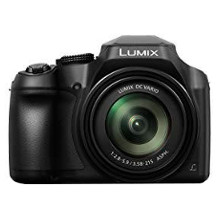
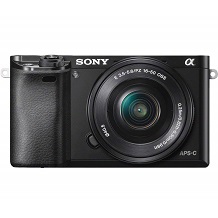
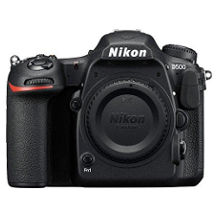
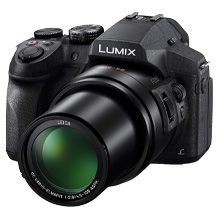
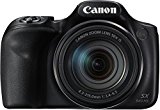
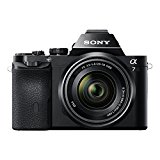
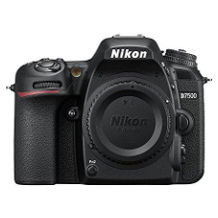
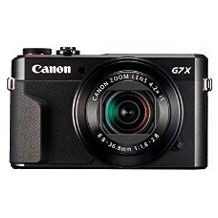
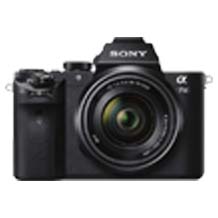
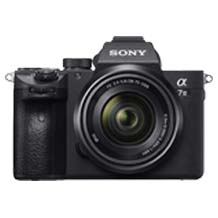
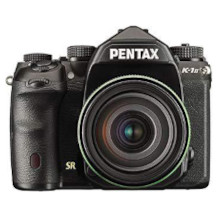
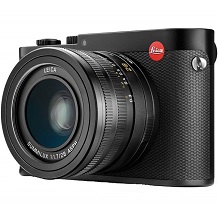
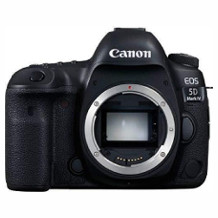
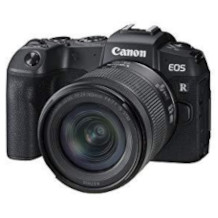
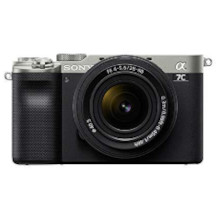
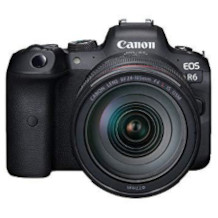

 1,320 reviews
1,320 reviews



